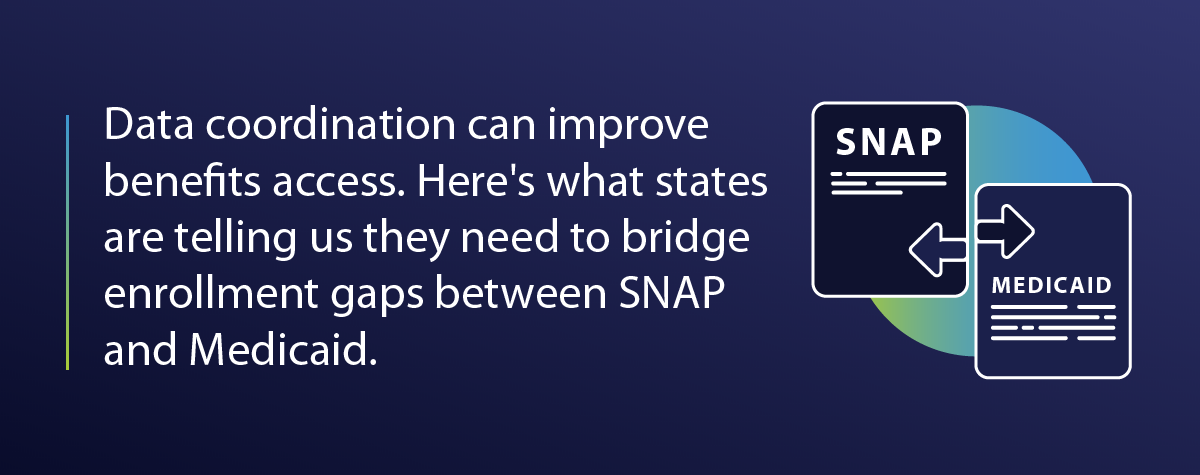
Benefits Data Trust (BDT) supports states across the country to leverage their existing data to identify and streamline access for families and individuals who are eligible for but not enrolled in public benefit programs. In 2020, about 9 million people were eligible but did not participate in the Supplemental Nutrition Assistance Program (SNAP). Similarly, in 2021, there were an estimated 7.3 million people eligible but not enrolled in Medicaid. BDT helps bridge this gap by matching enrollee lists of one benefit with another - for instance, SNAP and Medicaid - and identifying people receiving one benefit and who are likely eligible for but not yet receiving the other. Improving data coordination across SNAP and Medicaid programs has the potential to make enrollment easier and more efficient for both applicants and program administrators, while reducing the burden of navigating the eligibility processes for these benefits, and significantly improving health.
In 2022, BDT, with support from the Robert Wood Johnson Foundation, and in collaboration with the Center for Health Care Strategies, conducted a nationwide review of how SNAP and Medicaid programs within each state coordinate and share data. We published two reports and three case studies based on our findings, as well as the interactive map below.
KEY FINDINGS AND RECOMMENDATIONS
- Integration is not necessary for data sharing across programs – states without integrated SNAP and Medicaid systems share data at almost the same rate as those with integrated systems.
- States commonly share SNAP and Medicaid data with third parties; most often with Managed Care Organizations (MCOs) and non-profits.
- Medicaid and SNAP data sharing occurs in states across the political spectrum, regardless of state size or region.
- Our report recommends ways for the federal government to better support states in data coordination efforts and identifies promising practices for states to implement.
Interactive Map: Data Coordination at SNAP and Medicaid Agencies
The interactive map below provides an in-depth look into the survey responses we received in 2022 from Medicaid and SNAP agencies across the country. Scan individual survey questions and choose one or more responses to identify how states responded.
Check out our Data Sharing Playbook to guide data sharing and data-driven outreach efforts.
CASE STUDIES
As part of our collaboration, the Center for Health Care Strategies developed case studies highlighting innovative state strategies to improve data coordination between SNAP and Medicaid agencies and increase access for eligible people. Click below to read the case studies:
- Prioritizing the Needs of SNAP and Medicaid Clients and State Agencies in Colorado Through Technology Solutions
- South Dakota’s Medicaid and SNAP Eligibility Workforce: Streamlining Data Coordination to Facilitate Enrollment
- Using Data-Driven Outreach to Improve Access to Public Assistance Programs in North Carolina
